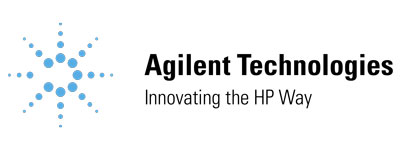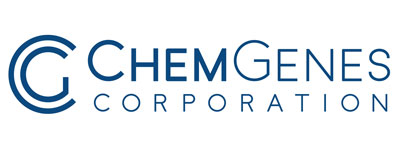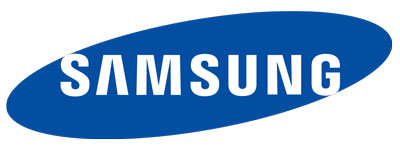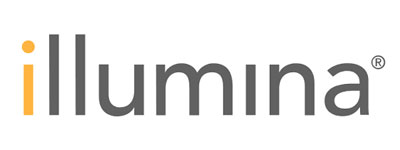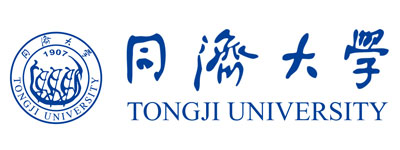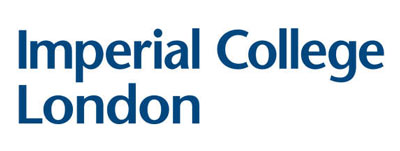Injectable PLLA Dermal Filler
EPRUI proudly declares that we now release a new product, Lyophilized PLLA powder.
The Injectable PLLA dermal filler is Sculptra Aesthetic similar injectable implant including poly-L-lactic acid(PLLA) microspheres, sodium carboxymethyl cellulose(USP), Non-pyrogenic mannitol(USP). It is reconstituted prior to use by the addition of sterile water for injection.
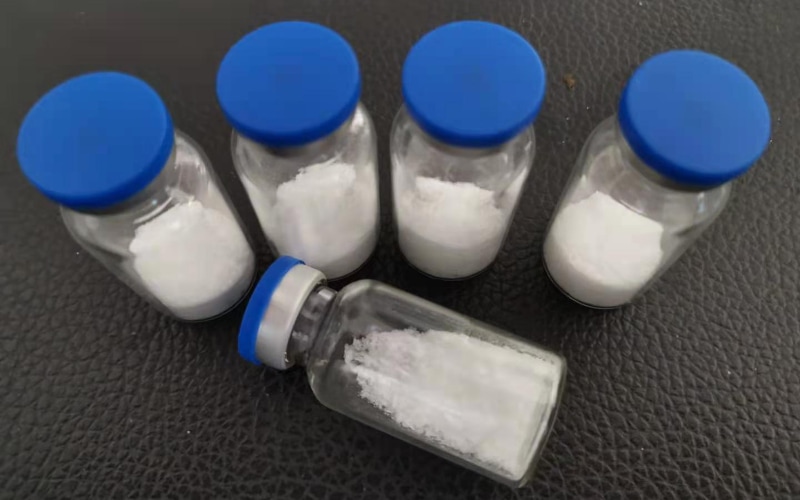
EPRUI Biotech Trusted By
Complete Buying Guide of injectable PLLA microspheres
Poly-L-lactic acid (PLLA) is a biocompatible, biodegradable, re-absorbable, immunologically inert polymer that induces neo collagenesis through a subclinical inflammatory response. The duration of clinical effect lasts for two years or more.
Poly-L-lactic acid (PLLA) was approved as a cutaneous filler in Europe in 1999, under the trade name of New-Fill.
In 2004 it was approved by the FDA in the U.S. with the brand name Lyophilized PLLA powder (Dermik Laboratories, Sanofi Aventis, USA), for the treatment of HIV-associated lipoatrophy.
In 2009 it was approved by FDA for treating volume loss with an aesthetic purpose under the name Lyophilized PLLA powder Aesthetic (Sanofi Aventis).
| Product | Injectable poly-L-lactic acid/PLLA |
|---|---|
| Composition | · poly-L-lactic acid/PLLA - 150mg · Sodium carboxymethyl cellulose - 90mg · Non-pyrogenic mannitol - 127.5mg |
| Package | Lyophilised powder in a sterile vial |
| Onset Time | 2-3 weeks |
| Duration Time | 2 years or above |
1. What are the differences between injectable PLLA and hyaluronic acid?
| Item | Injectable PLLA microspheres | Hyaluronic acid? |
|---|---|---|
| Mechanism | Different from hyaluronic acid or collagen protein injection,which are both physical filling. The mechanism of action occurs through the stimulation of fibroblasts in response to a subclinical tissular inflammation.It is this fibroplasia that produces the desired cosmetic result. New collagen begins to form after one month and continues to increase for nine months to a year. In the sixth month, many PLLA microspheres become porous and surrounded by macrophages. After this period there is no evidence of fibrosis and the PLLA particles disappear. The product’s degradation occurs through non-enzymatic hydrolysis into lactic acid monomers that are metabolized into CO2, H2O or incorporated into glucose. With its half-life estimated at 31 days, PLLA is totally eliminated from the body in about 18 months. | Hyaluronic acid is used as a physical filler to fill the defect. The hyaluronic acid is injected into the wrinkled and sunken parts of the dermis in the way of physical filling to achieve the effect of immediate wrinkle removal and appearance change |
| Effect Duration | The effect can be seen after injection for 2-3 weeks. However, the duration effect can be as long as 24 months or above. | The effect can be seen immediately. However, the duration effect is only 6-8 months. |
| Features | Biocompatible and biodegradable | Biocompatible and biodegradable |
| Indications | It is suitable for increasing the volume of depressed areas, particularly to correct skin depressions, such as in skin creases, wrinkles, folds, scars and for skin aging. Injectable PLLA is also suitable for large volume corrections of the signs of facial fat loss (lipoatrophy). | Thin skin areas around eyes, lips, etc |
2. What are the differences between injectable PLLA and botox?
| Item | Injectable PLLA microspheres | Botox |
|---|---|---|
| Mechanism | The mechanism of action occurs through the stimulation of fibroblasts in response to a subclinical tissular inflammation.It is this fibroplasia that produces the desired cosmetic result. New collagen begins to form after one month and continues to increase for nine months to a year. In the sixth month, many PLLA microspheres become porous and surrounded by macrophages. After this period there is no evidence of fibrosis and the PLLA particles disappear. The product’s degradation occurs through non-enzymatic hydrolysis into lactic acid monomers that are metabolized into CO2, H2O or incorporated into glucose. With its half-life estimated at 31 days, PLLA is totally eliminated from the body in about 18 months. | Botox is a neurotoxin. These substances target the nervous system, disrupting the nerve signaling processes that stimulate muscle contraction. This is how the drug causes temporary muscle paralysis. In order for any muscle to contract, the nerves release a chemical messenger called acetylcholine at the junction where nerve endings meet muscle cells. Acetylcholine attaches to receptors on the muscle cells and causes the cells to contract, or shorten. Botox injections prevent the release of acetylcholine, which stops the muscle cells from contracting. In this way, the toxin helps the muscles to become less stiff. |
| Effect Duration | The effect can be seen after injection for 2-3 weeks. However, the duration effect can be as long as 24 months or above. | The effect can be seen in 7-10 days. However, the duration effect is only 6-8 months. |
| Indications | It is suitable for increasing the volume of depressed areas, particularly to correct skin depressions, such as in skin creases, wrinkles, folds, scars and for skin aging. Injectable PLLA is also suitable for large volume corrections of the signs of facial fat loss (lipoatrophy). | Blepharospasm, hemifacial spasm and related focal dystonia. Temporary improvement of moderate to severe frown lines in adults aged 65 or below due to activity of the corrugator and / or descending interbrow muscles. |
3. What are the differences between injectable PLLA and PMMA?
| Item | Injectable PLLA dermal filler | Injectable PMMA dermal filler |
|---|---|---|
| Mechanism | The mechanism of action occurs through the stimulation of fibroblasts in response to a subclinical tissular inflammation.It is this fibroplasia that produces the desired cosmetic result. New collagen begins to form after one month and continues to increase for nine months to a year. In the sixth month, many PLLA microspheres become porous and surrounded by macrophages. After this period there is no evidence of fibrosis and the PLLA particles disappear. The product’s degradation occurs through non-enzymatic hydrolysis into lactic acid monomers that are metabolized into CO2, H2O or incorporated into glucose. With its half-life estimated at 31 days, PLLA is totally eliminated from the body in about 18 months. | Polymethylmethacrylate beads (PMMA microspheres): PMMA is a non-biodegradable, biocompatible, man-made polymer. This material is used in other medical devices, such as bone cement and intraocular lenses. PMMA beads are tiny, round, smooth particles that are not absorbed by the body. When used as soft tissue filler, PMMA microbeads are suspended in a gel-like solution that contains cow (bovine) collagen and injected into the face. Collagen is a type of protein that is a major part of skin and other tissues in the body. The composition of collagen gel provides immediate volume and lift to correct wrinkles and acne scars. Once collagen is absorbed, PMMA microspheres stay in place and create a base that provides structural support for smoother-looking skin. |
| Effect Duration | The effect can be seen after injection for 2-3 weeks. However, the duration effect can be as long as 24 months or above. | According to Bellafill, the effectiveness and patient satisfaction rates of PMMA dermal filler have been established through 5 years when used to correct nasolabial folds, and 12 months when used to correct acne scars |
| Indications | It is suitable for increasing the volume of depressed areas, particularly to correct skin depressions, such as in skin creases, wrinkles, folds, scars and for skin aging. Injectable PLLA is also suitable for large volume corrections of the signs of facial fat loss (lipoatrophy). | According to FDA, non-absorbable (permanent) PMMA soft tissue fillers are approved for only nasolabial folds and cheek acne scars. It is indicated for the correction of nasolabial folds and moderate to severe, atrophic, distensible facial acne scars on the cheek in patients over the age of 21 years. It is also suitable for large volume corrections of the signs of facial fat loss (lipoatrophy). |
4. What are the indications for using freeze dried PLLA powder?
It is suitable for increasing the volume of depressed areas, particularly to correct skin depressions, such as plump the temples, plump the cheekbones, smooth the tear groove, improve the cheek, fill the forehead, reduce the law lines, reduce the angular lines, tighten the parotid gland, decorate the chin. It is also suitable for large volume corrections of the signs of facial fat loss (lipoatrophy).
5. What are the contraindications for using freeze dried PLLA powder?
The contraindications to the use of the product are: areas previously treated with permanent fillers such as silicone or polymethylmethacrylate, and patients on aspirin, vitamin E, fish oil capsules, non steroidal antinflammatories and anticoagulants,the latter which should be discontinued ten days before the procedure.The use of PLLA is also not approved in children, and pregnant or lactating women.
Other contraindications are: use of immunosuppressants, heavy smoking, and patients eager for immediate results. Patients with chronic use of immunosuppressants and anti-inflammatory drugs such as corticosteroids, should be treated with extreme caution, for suppressing the inflammatory response during the treatment with prednisone can lead to subtherapeutic response. After discontinuing or interrupting prednisone, an exaggerated response to PLLA may occur.
6. Instructions for using injectable lyophilized PLLA powder
Auxiliary Supplies used during injection
- Sterile Water for Injection (SWFI), USP
- Single-use 5 mL sterile syringe
- Single-use 1-3 mL (depending on physician practitioner preference) sterile syringes (at least 2)
- 18 G sterile needles (at least 2)
- 26 G sterile needles (several should be available)
- Antiseptic
Reconstitution prior to use
Lyophilized PLLA powder is reconstituted in the following way:
- Remove the flip-off cap from the vial and clean the penetrable stopper of the vial with an antiseptic. If the vial, seal, or flip-off cap are damaged, do not use, and call the local distributor.
- Attach 18 G sterile needle to a sterile single-use 5 mL syringe.
- Draw 5 mL of SWFI, USP into the 5mL syringe.
- Introduce 18 G sterile needle into the stopper of the vial and slowly add all SWFI, USP into the vial.
- Let the vial stand for at least 2 hours to ensure complete hydration; do not shake during this period. Lyophilized PLLA can be stored at room temperature up to 30ºC or refrigerated between 2-8°C during and after hydration.
- Product should be gently agitated immediately prior to use. Agitate the vial until a uniform translucent suspension is obtained. A single vial swirling agitator may be used. The reconstituted product must be injected within 72 hours of reconstitution. If not used within 72 hours, it must be discarded.
- Clean the penetrable stopper of the vial with an antiseptic, and use a new 18 G sterile needle to withdraw an appropriate amount of the suspension (typically 1 mL) into a single–use 1-3 mL sterile syringe. Do not store the reconstituted product in the syringe.
- Replace 18 G needle with a 26 G sterile needle before injecting the product into the deep dermis or subcutaneous layer. Do not inject lyophilised PLLA using needles of an internal diameter smaller than 26 G.
- To withdraw remaining contents of the vial, repeat steps 6 through 8.
- Discard immediately after single session/patient use.
Patient Treatment
- Patient Assessment
A complete medical history should be taken to determine if the treatment is appropriate.Before treatment with lyophilized PLLA microspheres, the patient should be informed completely of the indications, contraindications, warnings, precautions for use, possible side effects and mode of administration of Lyophilized PLLA. Each patient should be informed that the amount of Lyophilized PLLA and the number of injection sessions will depend on the patient’s need and the severity of the depressed area. Patients should be informed that more than one injection session is typically necessary to achieve the desired results.
- Patient Preparation
As with all transcutaneous procedures, lyophilized PLLA microspheres injection carries a risk of infection.
Standard precautions associated with injectable materials should be followed. As with all injectable products, universal precautions must be observed when there is a potential for contact with patient body fluids.
The injection session must be conducted with aseptic technique.
- The needle for injections
Lyophilized PLLA microspheres should be injected using a 26 G sterile needle. Do not inject with needles smaller than 26 G and do not bend the needle. To maintain a uniform suspension throughout the procedure, intermittently agitate the product in the syringe. Before initial injection, expel a few drops of injectable PLLA microspheres through the attached 26 G needle to eliminate air and to check for needle blockage. If the 26 G needle becomes occluded or dull during an injection session replacement may be necessary. If clogging occurs, remove the needle, expel a small amount of product, attach a new sterile 26 G needle, then expel a few drops of lyophilized PLLA microspheres to eliminate the air and re-check for needle blockage.
- The deep dermal plane
Lyophilized PLLA microspheres should be injected into the deep dermis or subcutaneous layer. In order to control the injection depth of lyophilized PLLA microspheres, stretch/pull the skin opposite to the direction of the injection to create a firm injection surface. The 26 G sterile needle, bevel up, should be introduced into the skin at an angle of approximately 30-40 degrees, until the desired skin depth is reached. A change in tissue resistance is felt when the needle crosses from the dermis into subcutaneous layer. If the needle is inserted at too shallow (small) an angle or if the needle tip is not sufficiently advanced, then the needle tip may be in the mid or superficial (papillary) dermis, the needle bevel may be visible through the skin. If product is injected too superficially the injected area will blanch immediately or shortly after injection. If this occurs,the needle should be removed and the treatment area gently massaged. In the event that the blanching does not disappear, the patient should not be re-injected.
- Injecting: Threading or Tunnelling
a) Technique
When the appropriate dermal plane is reached, the needle angle should be lowered to advance the needle in that dermal plane. Prior to depositing PLLA microspheres in the skin, a reflux maneuver should be performed to assure that a blood vessel has not been entered.
Using the threading or tunnelling technique, a thin trail of lyophilized PLLA microspheres should then be deposited in the tissue plane as the needle is withdrawn. To avoid deposition in the superficial skin, deposition should be stopped before the needle bevel is visible in the skin.
b) Volume per injection
The maximum volume of lyophilized PLLA per each individual injection should be limited to 0.1 mL – 0.2 mL, spaced at a distance of 0.5 – 1 cm. Avoid overcorrection.
c) Volume per treatment area
The volume of product injected per treatment area will vary depending on the surface area to be treated. During the initial treatment sessions with, only a limited correction should be made. In contrast to other wrinkle fillers, lyophilized PLLA provides a gradual improvement of the depressed area over several weeks as the treatment effect occurs. Additional sessions may be needed to achieve full effect. The total number of injections and thus total volume of lyophilized PLLA microbeads injected will vary based on the surface area to be corrected, not on the depth or severity of the deficiency to be corrected.
- Injecting: Depot
a) Technique
The depot technique is most appropriate for injections into areas of thin skin at the level of the temples. When using this technique, lyophilized PLLA microbeads is injected as a small bolus deep to the temporalis muscle. Intramuscular injection should be avoided.
b) Volume per injection
The volume of lyophilized PLLA microbeads should be reduced to approximately 0.05 mL/injection. Following each injection, the area should be massaged.
- Massage during the injection session
The treatment areas should be periodically massaged during the injection session to evenly distribute the product.
- Degree of correction
The depressed area should never be overcorrected (overfilled) in an injection session. Limited correction of the treatment area allows for the gradual improvement of the depressed area over several weeks as the treatment effect occurs. Typically, patients will experience some degree of edema associated with the injection procedure itself, which will give the appearance of a full correction by the end of the injection session (within about 30 minutes). The patient should be informed that the injection-related edema typically resolves in several hours to a few days, resulting in the ‘reappearance’ of the original contour deficiency.
- Post-treatment care
Immediately following an injection session with lyophilized PLLA, redness, swelling, and/or bruising may be noted in the treatment area. Refer to ADVERSE REACTIONS section fordetails. After the injection session, an ice pack (avoiding any direct contact of the ice with the skin) should be applied to the treatment area in order to reduce swelling and/or bruising.
It is important to thoroughly massage the treatment area to evenly distribute the product. The patient should periodically massage the treatment areas for five minutes, five times per day for five days after the injection session to promote a natural-looking correction.
PLLA microspheres injected may be visualized with ultrasound imaging and MRI. It is not observed with CT scans and radiography.
7. Precautions for using injectable lyophilized PLLA powder
Lyophilized PLLA should only be used by health care providers with expertise in the correction of volume deficiencies after fully familiarizing themselves with the product, the product educational materials, and the entire instruction leaflet.
Lyophilized PLLA vials are for single patient and single session use only. Do not reuse or resterilize the vial. Discard immediately after use. Do not use if package or vial is opened or damaged.
Long-term safety and effectiveness of lyophilized PLLA beyond two years have not been studied in controlled clinical trials.
Lyophilized PLLA should be used in the deep dermis or subcutaneous layer. Avoid superficial injections in order to avoid the appearance of early papules or nodules at the injection site, which could be suggestive of improper injection techniques (superficial placement, excessive amount of product, incorrect reconstitution). In addition, massaging the treatment area to ensure proper distribution of the product may also minimize the appearance of papules or nodules.
Special care must be taken when using lyophilized PLLA in areas of thin skin, such as the periorbital area. An increased risk of papules and nodules in the periorbital area has been reported (see section “ADVERSE REACTIONS”). Refer to the INSTRUCTIONS FOR USE regarding injection techniques.
As with all transcutaneous procedures, lyophilized PLLA injection carries a risk of infection. Standard precautions associated with injectable materials should be followed. As with all injections, patients treated with anti-coagulants may run the risk of a hematoma or localized bleeding at the injection site.The safety of lyophilized PLLA for use during pregnancy, in breastfeeding females or in patients under 18 years has not been established. No studies of interactions of lyophilized PLLA with drugs or other substances or implants have been made.
The safety of using lyophilised PLLA in patients with susceptibility to keloid formation and hypertrophic scarring has not been established. Lyophilised PLLA should not be used in patients with known history of or susceptibility to keloid formation or hypertrophic scarring.
The patient should be informed that he or she should minimize exposure of the treatment area to excessive sun and avoid UV lamp exposure until any initial swelling and redness has resolved. If laser treatment, chemical peeling or any other procedure based on active dermal response is considered after treatment with lyophilised PLLA, there is a possible risk of eliciting an inflammatory reaction at the implant site. This also applies if lyophilised PLLA is administered before the skin has healed completely after such a procedure.
8. What are the adverse reactions after injecting PLLA?
The side effects usually resulting from the injections are transient bleeding from an area the size of the point of the needle or transient pain, localized redness at the injection site, ecchymosis, hematoma.
Based on data obtained through post-marketing surveillance and clinical studies, nodules have also been reported. Subcutaneous papules invisible but palpable, or visible nodules including periorbital nodules or areas of induration have been noted in the injection area and may be due to over-correction. Nodules are occasionally associated with inflammation or discoloration. The early occurrence of subcutaneous nodules (within 3 to 6 weeks after treatment) may be minimized by adhering to proper dilution and injection technique (e.g., avoiding superficial injections or over-correction). In addition, massaging the treatment area to ensure proper distribution of the product may also minimize the appearance of nodules.
Delayed occurrence of subcutaneous nodules at the injection site, mostly occurred several months post-injection (within 1 to 14 months), with sometimes a prolonged duration of up to 2 years. In some cases, they resolved spontaneously or following treatment with intralesional corticosteroids. Surgical excision of the nodules was sometimes required when they were larger in size, occurring in difficult anatomical regions (e.g. lower eyelid) or persisting after other treatments.For nodule areas or granuloma formation, the treatment may include multiple intralesional injections of corticosteroids or elective excision.
Other rarely reported adverse events include injection site abscess, injection site infection including cellulites (facial), staphylococcal infection, local infection, granuloma formation, allergic reaction, injection site urticaria, injection site swelling, skin hypertrophy and injection site atrophy, hypersensitivity, angioedema, telangiectasis, skin sarcoidosis.
Scarring and skin discoloration have also been reported.
9. What is the storage condition?
Lyophilized PLLA is supplied as a sterile freeze-dried preparation powder for injection in a clear glass vial, which is sealed by a penetrable stopper, covered by an aluminum seal with a flip-off cap. Each carton of lyophilized PLLA contains one vial.
Lyophilized PLLA powder should be stored at controlled room temperature (15-30°C) away from heat. Upon reconstitution, Lyophilized PLLA powder can be stored up to 72 hours at room temperature or refrigerated. Do not freeze.
IF THE VIAL, SEAL, OR FLIP-OFF CAP ARE DAMAGED, DO NOT USE, AND CONTACT local distributor of EPTRA
After use, treatment syringes and needles may be potential biohazards. Discard the needles and syringes in a safe disposal container.


